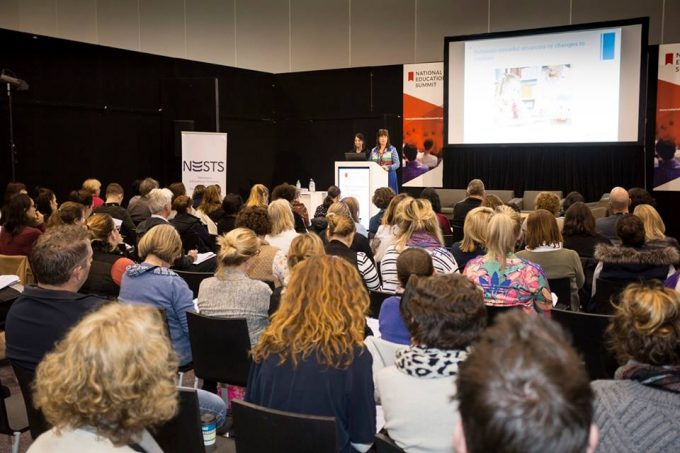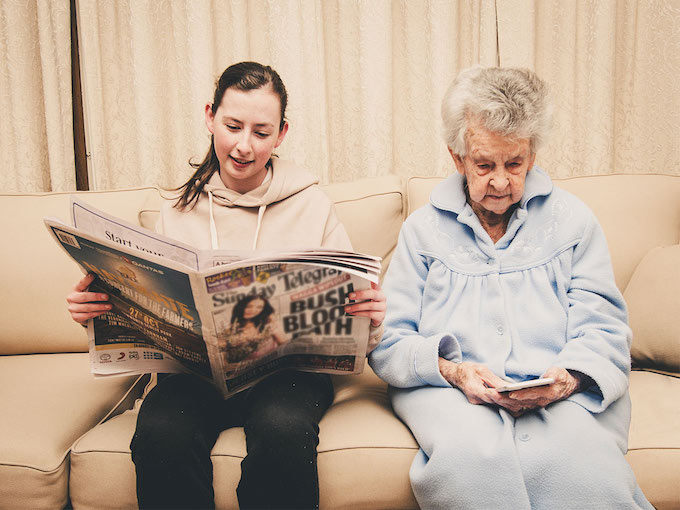A Year of Writing Competitions for Your Students to Enter
Across the country, there are dozens of opportunities for young writers to hone their craft each year. We list some of the national competitions offered in the next 12 months…

Please note competitions are listed by the approximate closing date.
March
KSP Spooky Story Competition
Held annually by the Katharine Susannah Prichard Writers’ Centre the Spooky Story Competition has a youth category open to students ages 10 to 17 years. Each year there is a different spooky theme. It is free to enter and there are cash prizes.
More info: Spooky Stories Competition | KSP Writers’ Centre
April, June, September, December
Little Stories Big Ideas Flash Fiction
Held four times a year to coincide with the school terms, this is a competition for secondary school students (junior Year 7-9 and senior Year 11-12) to write a story (or poem) in 100 words or less. Entry is free, there are prizes to be won and each term has a different theme.
More info: LSBI School Information Brochure
May
Future Leaders Writing Prize
Designed to recognise the future leaders of tomorrow this competition is open to year 11 and 12 students, for a fiction or non-fiction piece under 1,000 words. This competition is run by the Future Leaders Charity who also offer awards for justice, the environment and photography.
More info: Future Leaders – Awards
‘What Matters’ Writing Competition
A national competition run by the Whitlam Institute which asks students from year 5 to 12 to write about what matters to them in 600 words, fiction or non-fiction.
More info: Whitlam Institute What Matters
July
Flinders University Young Playwrights’ Award
The annual Award has multiple categories, including a Junior Award (ages 13-17), and Senior Award (ages 18-25) for an original play submitted to a panel of industry professionals.
More info: State Theatre Company South Australia
Queensland Theatre’s Young Playwrights’ Award
The annual Award is one of the country’s longest running playwright competitions for young writers and is open to student writers in Years 9-12. Writers must submit an original play script of any length and genre, as well as a 150 word rationale describing their inspiration.
More info: Queensland Theatre
August
Hachette Australia Prize for Young Writers
An annual competition open to secondary students across Australia, the Hachette prize has three categories (fiction, creative non-fiction and poetry) and gives shortlisted entries the chance to be mentored by an established author plus publication and prize money for the winner.
More info: The Hachette Australia Prize for Young Writers – Express Media
State Library of Queensland Young Writers Award
The annual Award is open to older students (age 18-25) for short stories up to 2,500 words. It has an impressive history of shortlisted writers who have gone on to publish books and win prestigious national prizes.
More info: State Library of QLD
September
KSP Short Fiction Competition – Youth Category
Held annually by the Katharine Susannah Prichard Writers’ Centre in the hills of Perth, the Short Fiction Competition has a youth category open to students ages 10 to 17 years from across the country. It is free to enter and there are cash prizes.
More info: Katharine Susannah Prichard Writers’ Centre
Heywire Competition
Open to youth aged between 16 and 22, this competition is for students living in remote, regional and rural Australia. Entries are stories of 400 words detailing an aspect of life but can also be can be audio, vidhavings include the chance to have the story professionally produced by the ABC and a trip to the Heywire Summit in Canberra.
More info: Competition – Heywire
The New England Thunderbolt Prize for Crime Fiction (Youth Award)
A sub-category of the national crime fiction prize, this competition is open to writers under 18 years who write a fictional story (2,500 words), a non-fiction article (2,500 words) or 60 line poem about crime.
More info: Thunderbolt Prize for Crime Writing
November
The Simpson Prize
Run by the History Teachers’ Association of Australia, the Simpson prize is open to students in Year 9 and 10 and each year provides a set question about the services of Australians in World War 1. Winners and runners-up from each state participate in a special program in Canberra.
More info: The Simpson Prize
December
The Storyfest National Novella Writing Competition
Open to all secondary students under the age of 19, entrants must provide a novella of between 8,000 and 20,000 words. There is an entry fee but there are state and overall winners, with prizes including cash and travel to the Somerset Storyfest on the Gold Coast.
More info: Novella Writing Competition | Somerset Storyfest
The Storyfest National Poetry Prize
Open to all secondary students this poetry prize has a junior (year 7-9) and senior (years 11 and 12) category. Entrants must provide a poem of up to 50 lines. There is an entry fee but there are state and overall winners, with prizes including cash and travel to the Somerset Storyfest on the Gold Coast.
More info: National Poetry Prize | Somerset Storyfest
What other competitions would you add to this list? Please comment below.
Read all the latest news and stories with the latest print edition of School News here.






